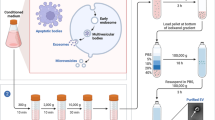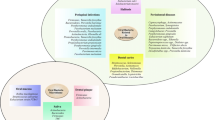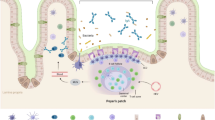Abstract
Gingival innate immunity has been studied by using biopsies and normal or transformed epithelial cell monolayers. To overcome individual biological variabilities and as a physiological alternative, we have proposed using a reconstructed tissue equivalent. In this study, we investigated the functionality and the stage of differentiation of a reconstructed human gingival epithelium. We also characterized this epithelium at the molecular level to investigate its differentiation stage compared with native human gingival epithelium. The expression levels and localization of markers related to proteins and lipids of well-differentiated stratified epithelium, such as cytokeratins, cornified envelope proteins and enzymes, or to factors in lipid synthesis and trafficking were examined. Immunohistochemistry revealed similar localization patterns in both types of epithelia and mRNA quantification showed a close resemblance of their expression profiles. We further revealed that, like native gingiva, reconstructed gingival epithelium was able to respond to pro-inflammatory or lipopolysaccharide stimuli by producing antimicrobial peptides hβD-2, hβD-3 or LL-37. Finally, we demonstrated that reconstructed human gingival epithelium, as a model, was good enough to be proposed as a functional equivalent for native human gingival epithelium in order to study the regulation of gingival innate immunity against periodontal infections.







Similar content being viewed by others
References
Abiko Y, Nishimura M, Kusano K, Yamazaki M, Arakawa T, Takuma T, Kaku T (2003) Upregulated expression of human beta defensin-1 and −3 mRNA during differentiation of keratinocyte immortalized cell lines, HaCaT and PHK16-0b. J Dermatol Sci 31:225–228
Ali RS, Falconer A, Ikram M, Bissett CE, Cerio R, Quinn AG (2001) Expression of the peptide antibiotics human beta defensin-1 and human beta defensin-2 in normal human skin. J Invest Dermatol 117:106–111
Chadebech P, Goidin D, Jacquet C, Viac J, Schmitt D, Staquet MJ (2003) Use of human reconstructed epidermis to analyze the regulation of beta-defensin hBD-1, hBD-2, and hBD-3 expression in response to LPS. Cell Biol Toxicol 19:313–324
Dale BA (2002) Periodontal epithelium: a newly recognized role in health and disease. Periodontol 2000 30:70–78
Dale BA, Kimball JR, Krisanaprakornkit S, Roberts F, Robinovitch M, O’Neal R, Valore EV, Ganz T, Anderson GM, Weinberg A (2001) Localized antimicrobial peptide expression in human gingiva. J Periodontal Res 36:285–294
Delcourt-Huard A, Corlu A, Joffre A, Magloire H, Bonnaure-Mallet M (1997) Reconstituted human gingival epithelium: nonsubmerged in vitro model. In Vitro Cell Dev Biol Anim 33:30–36
Feucht EC, DeSanti CL, Weinberg A (2003) Selective induction of human beta-defensin mRNAs by Actinobacillus actinomycetemcomitans in primary and immortalized oral epithelial cells. Oral Microbiol Immunol 18:359–363
Frohm M, Agerberth B, Ahangari G, Stahle-Backdahl M, Liden S, Wigzell H, Gudmundsson GH (1997) The expression of the gene coding for the antibacterial peptide LL-37 is induced in human keratinocytes during inflammatory disorders. J Biol Chem 272:15258–15263
Ganz T (2003) Defensins: antimicrobial peptides of innate immunity. Nat Rev Immunol 3:710–720
Gosselin F, Gervaise M, Neveux Y, Portier MM (1989) Reconstitution in vitro of human gingiva. C R Acad Sci III 309:323–329
Gosselin F, Magloire H, Joffre A, Portier MM (1990) Cytokeratins as molecular markers in the evaluation of the precise differentiation stage of human gingival epithelium reconstituted in vitro. Arch Oral Biol 35 Suppl:217S–221S
Hansson A, Bloor BK, Haig Y, Morgan PR, Ekstrand J, Grafstrom RC (2001) Expression of keratins in normal, immortalized and malignant oral epithelia in organotypic culture. Oral Oncol 37:419–430
Izumi K, Terashi H, Marcelo CL, Feinberg SE (2000) Development and characterization of a tissue-engineered human oral mucosa equivalent produced in a serum-free culture system. J Dent Res 79:798–805
Joly S, Organ CC, Johnson GK, McCray Jr PB, Guthmiller JM (2005) Correlation between beta-defensin expression and induction profiles in gingival keratinocytes. Mol Immunol 42:1073–1084
Kielar D, Kaminski WE, Liebisch G, Piehler A, Wenzel JJ, Mohle C, Heimerl S, Langmann T, Friedrich SO, Bottcher A, Barlage S, Drobnik W, Schmitz G (2003) Adenosine triphosphate binding cassette (ABC) transporters are expressed and regulated during terminal keratinocyte differentiation: a potential role for ABCA7 in epidermal lipid reorganization. J Invest Dermatol 121:465–474
Langbein L, Grund C, Kuhn C, Praetzel S, Kartenbeck J, Brandner JM, Moll I, Franke WW (2002) Tight junctions and compositionally related junctional structures in mammalian stratified epithelia and cell cultures derived therefrom. Eur J Cell Biol 81:419–435
Lindberg K, Rheinwald JG (1990) Three distinct keratinocyte subtypes identified in human oral epithelium by their patterns of keratin expression in culture and in xenografts. Differentiation 45:230–241
Liu L, Roberts AA, Ganz T (2003) By IL-1 signaling, monocyte-derived cells dramatically enhance the epidermal antimicrobial response to lipopolysaccharide. J Immunol 170:575–580
Lu Q, Samaranayake LP, Darveau RP, Jin L (2005) Expression of human beta-defensin-3 in gingival epithelia. J Periodontal Res 40:474–481
Mizutani Y, Kihara A, Igarashi Y (2004) Identification of the human sphingolipid C4-hydroxylase, hDES2, and its up-regulation during keratinocyte differentiation. FEBS Lett 563:93–97
Odioso LL, Doyle MJ, Quinn KW, Bartel RL, Zimber MP, Stevens-Burns D (1995) Development and characterization of an in vitro gingival epithelial model. J Periodontal Res 30:210–219
Presland RB, Dale BA (2000) Epithelial structural proteins of the skin and oral cavity: function in health and disease. Crit Rev Oral Biol Med 11:383–408
Rouabhia M, Deslauriers N (2002) Production and characterization of an in vitro engineered human oral mucosa. Biochem Cell Biol 80:189–195
Salonen JI, Kautsky MB, Dale BA (1989) Changes in cell phenotype during regeneration of junctional epithelium of human gingiva in vitro. J Periodontal Res 24:370–377
Schurer NY, Elias PM (1991) The biochemistry and function of stratum corneum lipids. Adv Lipid Res 24:27–56
Smith SA, Dale BA (1986) Immunologic localization of filaggrin in human oral epithelia and correlation with keratinization. J Invest Dermatol 86:168–172
Ta BM, Gallagher GT, Chakravarty R, Rice RH (1990) Keratinocyte transglutaminase in human skin and oral mucosa: cytoplasmic localization and uncoupling of differentiation markers. J Cell Sci 95:631–638
Tomakidi P, Breitkreutz D, Fusenig NE, Zoller J, Kohl A, Komposch G (1998) Establishment of oral mucosa phenotype in vitro in correlation to epithelial anchorage. Cell Tissue Res 292:355–366
Vandesompele J, De Preter K, Pattyn F, Poppe B, Van Roy N, De Paepe A, Speleman F (2002) Accurate normalization of real-time quantitative RT-PCR data by geometric averaging of multiple internal control genes. Genome Biol 3:research0034.1-research0034.11
Yang D, Biragyn A, Hoover DM, Lubkowski J, Oppenheim JJ (2004) Multiple roles of antimicrobial defensins, cathelicidins, and eosinophil-derived neurotoxin in host defense. Annu Rev Immunol 22:181–215
Acknowledgements
We are grateful to E.P. Benque for his valuable contributions to this project, to dental practitioners from Toulouse CHU for supplying gingival tissues (P. Barthet, J.M. Chamoux, J.F. Duffort and A. Sancier) and to S. Laurencin and P. Kemoun for careful reading of manuscript.
Author information
Authors and Affiliations
Corresponding author
Additional information
This investigation was supported by a grant from Pierre Fabre Oral Care.
Rights and permissions
About this article
Cite this article
Peyret-Lacombe, A., Duplan, H., Watts, M. et al. Antimicrobial peptide modulation in a differentiated reconstructed gingival epithelium. Cell Tissue Res 328, 85–95 (2007). https://doi.org/10.1007/s00441-006-0344-8
Received:
Accepted:
Published:
Issue Date:
DOI: https://doi.org/10.1007/s00441-006-0344-8




